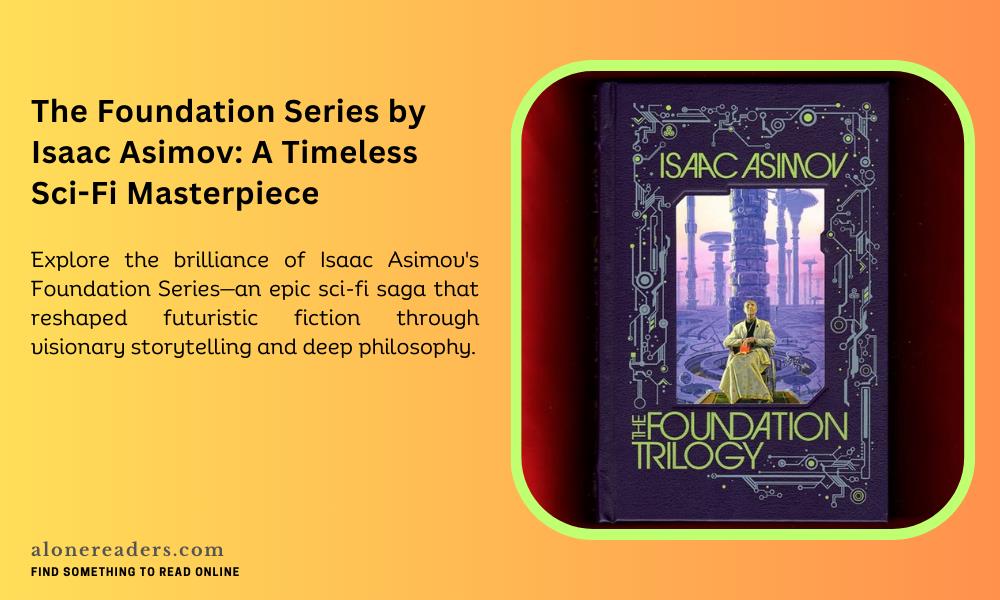
Isaac Asimov’s Foundation series stands as one of the towering pillars of science fiction literature, influencing generations of writers, thinkers, and readers alike. Composed originally as a trilogy—Foundation, Foundation and Empire, and Second Foundation—the series later expanded to include prequels and sequels, transforming into a sprawling narrative about the fate of a galactic civilization. More than a science fiction tale, it is a profound examination of human behavior, history, politics, and the cyclical nature of civilizations.
At the heart of the series lies the concept of psychohistory, a fictional science developed by the brilliant mathematician Hari Seldon. This statistical forecasting tool combines history, sociology, and mathematics to predict the behavior of large populations. With the collapse of the Galactic Empire looming, Seldon creates the Foundation—a repository of knowledge at the edge of the galaxy—with the goal of shortening the dark age expected to follow the Empire’s fall. Through this premise, Asimov constructs a saga that spans centuries, with each book revealing a different phase of the plan’s implementation and the unexpected crises that threaten its success.
What sets the Foundation series apart from other science fiction epics is its intellectual ambition. Asimov refrains from focusing on action-heavy sequences or alien invasions. Instead, he builds tension through philosophical dilemmas, political maneuvering, and ethical questions. The series is rich in dialogue, theories, and the interplay of ideas. The real conflict is often not physical but intellectual—battles of wits between politicians, scientists, and leaders who seek to bend the fate of the galaxy to their will.
The narrative structure of the original trilogy is also unconventional. Instead of following a single protagonist, it presents a collection of loosely connected stories with different characters across different time periods. This technique allows Asimov to explore the long-term consequences of actions and ideas, giving readers a sense of historical evolution rarely captured in fiction. Each story arc in the series serves as a piece of a grander mosaic, revealing the scope and complexity of Seldon’s vision and its vulnerabilities.
Characters like Salvor Hardin, Hober Mallow, and The Mule offer distinct lenses through which to view the Foundation’s challenges. The Mule, in particular, introduces a brilliant twist in Foundation and Empire. As a mutant with the ability to manipulate emotions, he poses a threat that psychohistory could not foresee. His emergence disrupts Seldon’s meticulously calculated plan and raises questions about the predictability of human nature. It is through The Mule that Asimov explores the limitations of science and logic when confronted with anomalies—those unpredictable forces that history fails to account for.
As the series progresses into Second Foundation, the focus shifts to a secretive group that represents the hidden hand behind the scenes—the Second Foundation, composed of mentalics who safeguard the original plan from behind the curtain. Their intervention is both unsettling and reassuring, posing ethical questions about control, autonomy, and the price of stability. Are we better off being steered by benevolent manipulators if it prevents chaos? Or does such control undermine the very essence of free will?
Asimov’s later additions to the series—Foundation’s Edge, Foundation and Earth, Prelude to Foundation, and Forward the Foundation—add further complexity and depth. These books delve into the origins of psychohistory, the character of Hari Seldon himself, and the ultimate fate of the galactic civilization. While some critics argue that the latter books are not as tightly written as the original trilogy, they nonetheless enrich the universe and provide closure to long-running narrative arcs. They also link the Foundation universe to Asimov’s other major series—the Robot and Empire books—creating a unified timeline that spans tens of thousands of years.
Stylistically, Asimov's writing is clear, methodical, and idea-driven. He avoids florid prose, focusing instead on clarity and precision. This makes the series accessible, even when dealing with complex theoretical concepts. However, readers looking for lush world-building or deeply emotional character arcs may find the writing somewhat dry. The books are cerebral by design, inviting readers to engage with grand ideas rather than lose themselves in dramatic storytelling.
Despite being first published in the 1950s, the Foundation series remains astonishingly relevant. Its exploration of the rise and fall of empires, the power of knowledge, and the tension between determinism and free will continues to resonate. In today’s world—marked by technological upheaval, political uncertainty, and concerns about the future of humanity—Asimov’s vision feels eerily prophetic. The idea that scientific understanding could be used not just to predict but to steer the course of history is both thrilling and cautionary.
The influence of Foundation on science fiction and popular culture cannot be overstated. It inspired countless authors, from Arthur C. Clarke to Frank Herbert, and even influenced tech visionaries like Elon Musk. The series has also recently been adapted into a visually rich but narratively altered television series by Apple TV+, further testifying to its enduring appeal.
In conclusion, The Foundation Series is not merely a classic—it is a cornerstone of science fiction literature. It challenges readers to think deeply about the forces that shape societies, the role of science in human affairs, and the limits of control in a chaotic universe. For fans of speculative fiction who prefer ideas over explosions, philosophy over fanfare, and vision over vanity, Isaac Asimov’s Foundation remains essential reading—a literary monument to the power of thought itself.